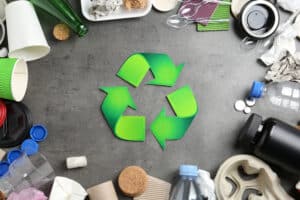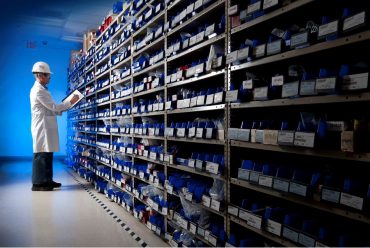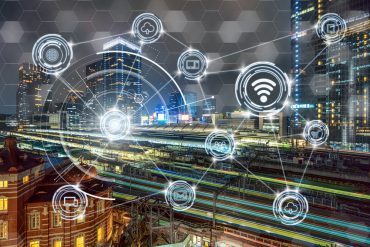
Companies are taking a creative approach to recycling that starts with the sorting process and applies the talents of machines to help human teams become more efficient.
Despite massive infrastructure and resources dedicated to recycling, only a small portion of materials stay out of landfills. Plastic is a particular concern because of its long life and potential to leak toxins into the surrounding areas without planning. But there’s good news. Experts are applying artificial intelligence to answer the challenge with some surprising early results.
Recycling is in crisis, but companies are tackling the problem
Overpopulation and reliance on single-use plastics are contributing to the waste crisis. The world produces between seven and nine billion tons of waste per year. According to a study from 2020, around 70% of this is mismanaged and presents a contamination hazard.
Obviously, a circular economy is ideal, but difficult in practice. To manage the crisis, companies are taking a creative approach to recycling that starts with the sorting process and applies the talents of machines to help human teams become more efficient.
Creating new applications for AI in real-world challenges
Collaboration ensures more resources move toward a complex problem like recycling optimization. Recently, Recycleye—a company in the waste analytics space—has partnered with Keymakr. Thanks to Keymakr’s high-quality digital annotation services, Recycleye will be able to further optimize its waste analysis capabilities.
Optimizing waste sorting could help keep more materials out of landfills without dramatically increasing the resources required in the sorting process, both human and machine. Right now, dividing salvageable materials from those that can’t be recycled is a danger to human teams and a time-consuming process as well.
Better sorting would help keep sanitation workers safer while ensuring a better result from the sorting process. Thanks to highly trained algorithms that can learn as they interact with waste, companies might see better results more quickly than with any other technology investment. Keymakr’s specialized algorithms will identify and label edge cases.
See also: Are Autonomous Buildings on the Horizon?
Machine learning brings multiple benefits to recycling processes.
The algorithms work through computer vision, allowing machines to quickly scan waste piles and identify materials that can be reused. The partners hope that through specified training, computer vision will identify more materials as well as materials likely to be mislabeled to help reduce the nearly 91% of plastics still making their way to landfills despite recycling potential.
The most common form of computer vision for this application is object recognition. This gives machines a chance to aid workers in the sorting process. Other partnerships have put machine learning to this task, including the collaboration of Superbin and Tictag in South Korea.
These partnerships leveraging AI bring several benefits to the process.
Artificial intelligence won’t replace humans in recycling centers and sorting tasks. However, much like applying it to other industries, it can bring a number of key benefits to the process as a whole.
Keeping workers safer while improving efficiency
Sorting that relies on human labor is an inherently inefficient process. In addition, workers place themselves in a lot of danger sorting through waste. Companies can speed up sorting without asking too much of human teams. For example, Superman and Tictag rely on cameras equipped with computer vision capabilities inside an automatic sorting machine. Workers simply place the waste in the machine to identify and verify the waste.
This also allows recycling facilities to expand operations efficiently without adding to headcount. These machines can learn without human input and supplement human teams.
Increased quality control
Machines learn more efficiently than humans do in many cases. These algorithms can help reduce contamination and misclassification, which led China to reject recyclables from the United States a few years ago.
The US recycling plan previously relied on sending waste to India or China for recycling, where much of it ended up in landfills. But now, the United States is at a tipping point, and startups are stepping in to help fill those gaps. Their algorithms may help the country get over the efficiency hurdle required to optimize recycling without sending it overseas.
Enabling better robotics
These partnerships also enable better robotics, which goes one step further from identification and allows robots to complete the sorting. Again, this combination requires very little human input or intervention and can help reduce the number of injuries sanitation workers experience. Robots are faster, and machine learning enables the identification of a wider variety of traits.
Recycleye also launches Keylabs
Keylabs is a purpose-built SaaS platform designed to streamline labeling and annotation. The straightforward platform enables companies to better use Keymakr’s algorithms, whether the company has a data annotation team or not.
This will increase the number of companies able to integrate cutting-edge technologies like this one into everyday operations. The Keylabs interface improves the speed of annotation without sacrificing accuracy. The companies hope to revolutionize the waste sorting industry so that the next few decades won’t end with humanity overrun with trash.
Recycling is notoriously inefficient, but AI might change our fate
Experts still prioritize the “reduce and reuse”– a portion of the classic maxim “reduce, reuse, recycle,”– but with more plastics ending up in landfills, starting at sorting can bring the last piece of the puzzle to a new level.
Keymakr and Recycleye’s work brings machine learning to real-world problems for humanity, ones where we’re standing on the precipice of “too late.” These machines help humans work more efficiently and keep us safer in jobs where accuracy and safety are often on opposing ends.
They aren’t the first to start a partnership like this, and they won’t be the last. However, it is a good sign to see companies with such widespread capabilities coming together with big solutions for big problems. And what happens next could change this part of the climate crisis for the better.





























